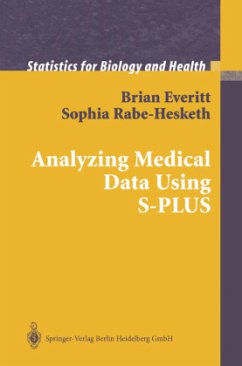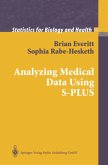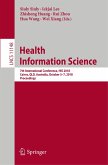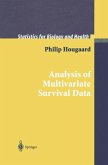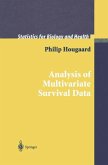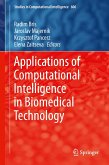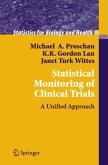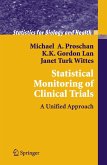Each chapter will consist of basic statistical theory, simple examples of S-PLUS code, more complex examples of S-PLUS code, and exercises. All data sets will be taken from genuine medical investigations and will be made available, if possible, on a web site. All examples will contain extensive graphical analysis to highlight one of the prime features of S-PLUS. The book would complement Venables and Ripley (VR). However, there is far less about the details of S-PLUS and probably less technical descriptions of techniques. The book concentrates solely on medical data sets trying to demonstrate the flexibility of S-PLUS and its huge advantages, particularly for applied medical statisticians.
From the reviews: TECHNOMETRICS "...a well-organized, nicely conceived book that will be useful to practitioners with S-PLUS in any environment." SHORT BOOK REVIEWS "This book presents a survey of modern methods used in, but not confined to, medical statistics, each accompanied by a brief summary of the mathematical components, instruction in the basics of the S-PLUS computer language, up-to-date references, examples using sets of data from medical research, and S-PLUS code for the examples. The sets of data and S-PLUS code are available for downloading from a website referenced in the book (some but not all of the S-PLUS code runs in R, the freeware counterpart of S). ... The book will be a handy reference on my consulting shelf." "In this book, Everitt and Rabe-Hesketh demonstrate how to use S-PLUS, while giving a broad overview of many analytical methods ... . I recommend it for the practicing statistician who either wants to learn about S-PLUS or who already uses S-PLUS and wants ideas for additional usage. ... There are two types of courses for which this book might be considered as a text: statistical computing and statistical methods. ... students may want to purchase it to serve as an overview of statistical methods ... ." (Jeffrey D. Dawson, Journal of the American Statistical Association, Vol. 98 (463), 2003) "The title of this book is well chosen. It is about the analysis of medical data ... . the authors cover the main techniques of numerical and graphical statistical analyses ... . Moreover, there are examples ... with the data and the scripts and useful graphical displays. Users can edit the scripts and use them to build their own analyses. People work most efficiently in doing statistical analysis by using existing examples and transforming them to new tasks. In this the authors provide value." (John C. Nash, Statistical Methods in Medical Research, Vol. 13 (5), 2004) "This book presents the statistical techniques that are most often used in medicine through examples solved with the statistical software S-PLUS. ... The section on S-PLUS code is very well explained, and it is easy to identify how an analysis arises ... . The most interesting contributions of this book are the examples, which are varied and related to epidemiology or clinical studies. ... Finally, the data sets and S-PLUS code to analyse them are offered at the authors' Web site ... ." (Victor Moreno, Journal of the Royal Statistical Society Series A: Statistics in Society, Vol. 157 (3), 2004) "This is a book about extracting meaningful data from even the most limited or complex systems ... . It provides useful examples taken from real world situations, with short descriptions of the methodologies that should be enough to get one on track to understand and use them. It also includes sample code for repeating the analysis using S-PLUS. ... All methods, up to highly-specialised modelling approaches are summarily described in side boxes with appropriate pointers to more detailed descriptions in the literature." (José Ramón Valverde, Briefings in Functional Genomics and Proteomics, Vol. 2 (2), 2003) "It covers a range of statistical methods useful in the analysis of medical data, from the simple to the sophisticated, and shows how they may be applied using S-PLUS. ... The main text is a pleasure to read partly due to its separation from the technical descriptions of the statistics and methodology which are given in 'display' items ... . It is possible that, for the field of medical statistics, 'Everitt and Rabe-Hesketh' will also become a classic amongst the S-PLUS community." (Margaret May, International Journal of Epidemiology, Vol. 32 (1), 2003) "The aim of the book is to show how to use S-PLUS as a powerful environment for undertaking a variety of statistical analyses from simple inference to complex model fitting, and for providing informative graphics. ... The mix of real data examples and background theory makes this book useful for students and researchers alike. For the former, exercises are provided at the end of each chapter to increase their fluency in using the command line language of the S-PLUS software." (T. Postelnicu, Zentralblatt MATH, Vol. 985, 2002)

